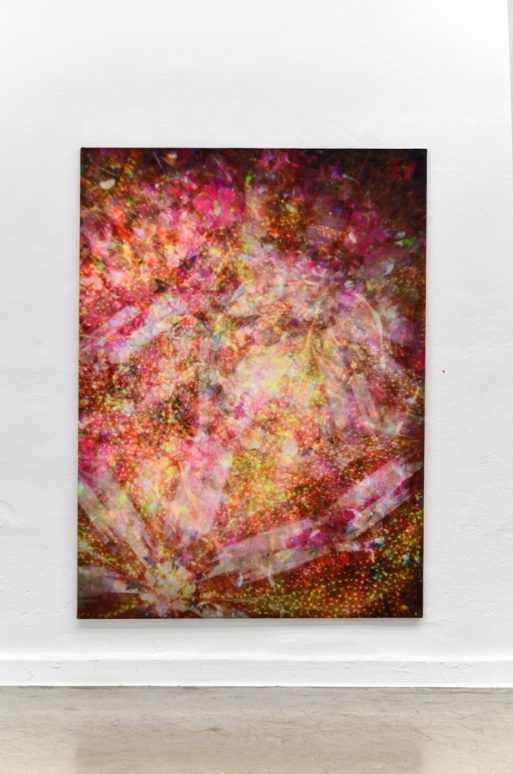Works at a glance
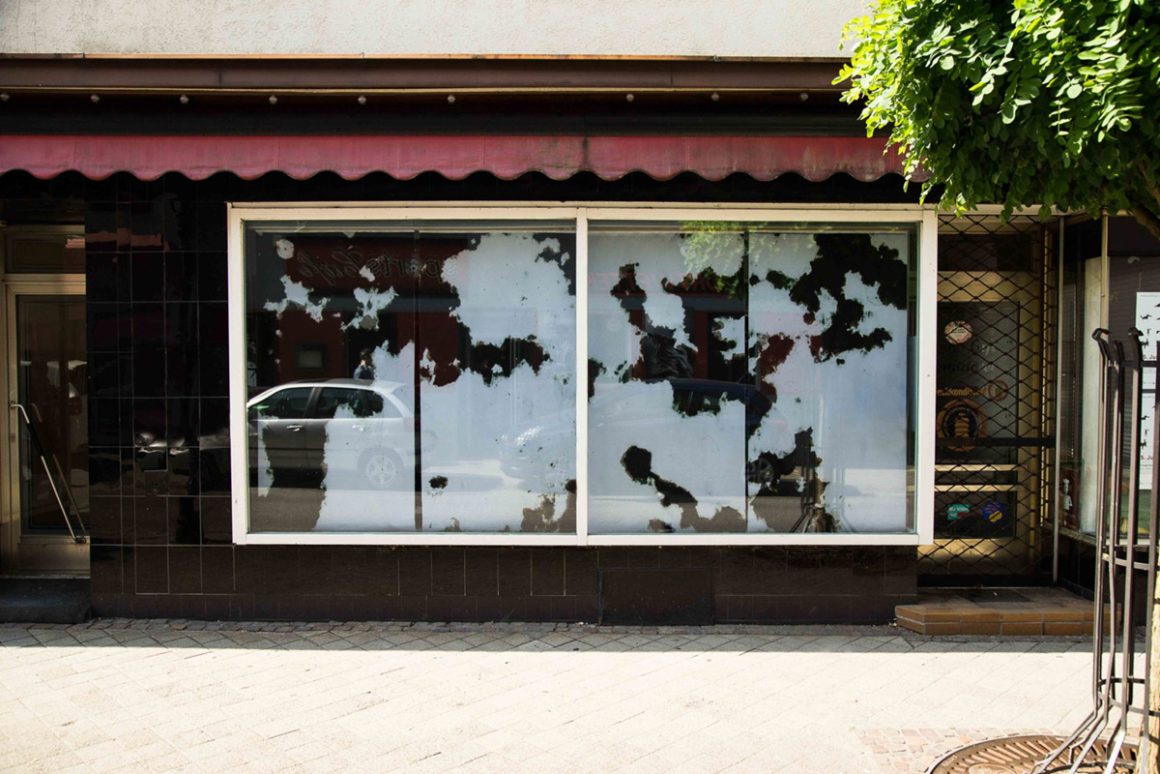
Z
Analogue film is decomposed using chemistry. Without the use of a camera or light, this chemical process produces abstract images that question and resolve photography as a medium. Developed over many years, her experimental process plays with the random nature of chemical decomposition.
KODAKGOLD, 2021
Room installation, Schaufenster Junge Kunst, Galerie Stadt Sindelfingen
L
Landscape photographs (found footage) are superimposed until all that is left is shapes and colours. The photographs are cut up and just a few pixels of the original work are shown.
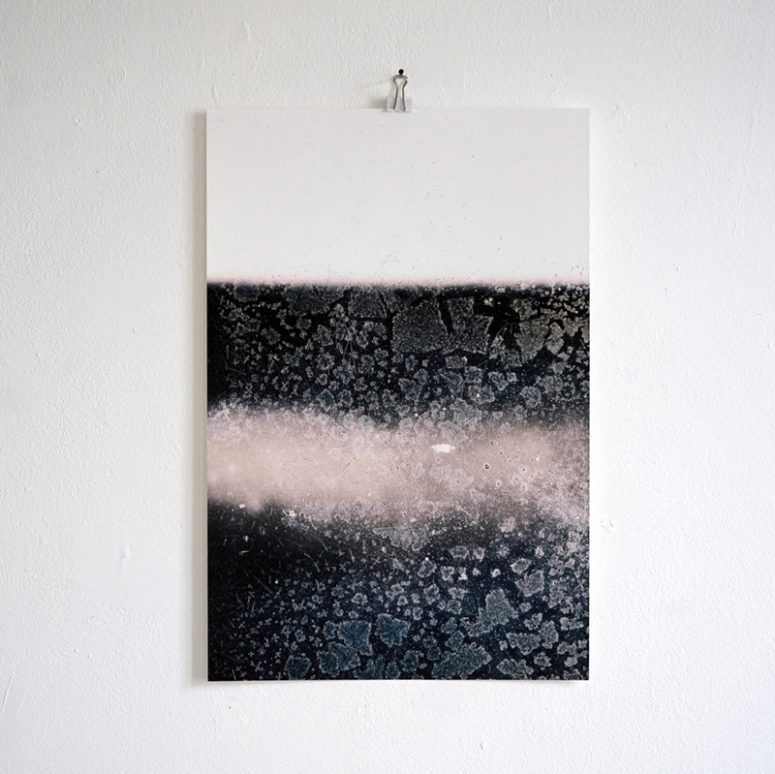
AI SERIES, NASA, 2023
This AI series features works created from NASA images. The processing of these images and their emergence provided the starting point for the series. None of the images were intended to show anything. Even after processes lasting many months, none of the outcomes were satisfactory. These images were then sent through AI (app). The language-based program produces new images that acquire a right to exist through AI. The image’s title is the text used for its processing. The texts were selected on the basis of the original images.
FOUND FOOTAGE (PROVISIONAL TITLE), 2023
Found footage videos from the internet are processed into digital collages. The detail in the image is then reduced and the composition of the pixels made visible. A digital decomposition process.
GL, since 2019
Surreal shots of landscapes have been emerging on journeys across Germany since 2019. Plastic collected in situ is turned into a manipulated lens and this contaminated lens then captures shadowy outlines.
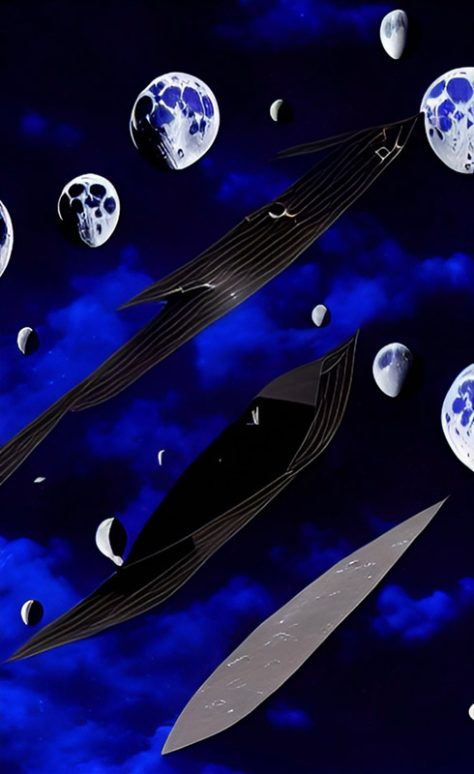
N #01, 2017
The Hubble telescope sends back colourful shimmering images from far-off galaxies. However, before they are published they are in black and white and a laborious process is involved in putting them together and adding colour. N takes up this process. Galaxies emerge out of pictures of clouds produced using weather forecasts. These were photographed at different points in Germany and aggregated in a process lasting a number of weeks.
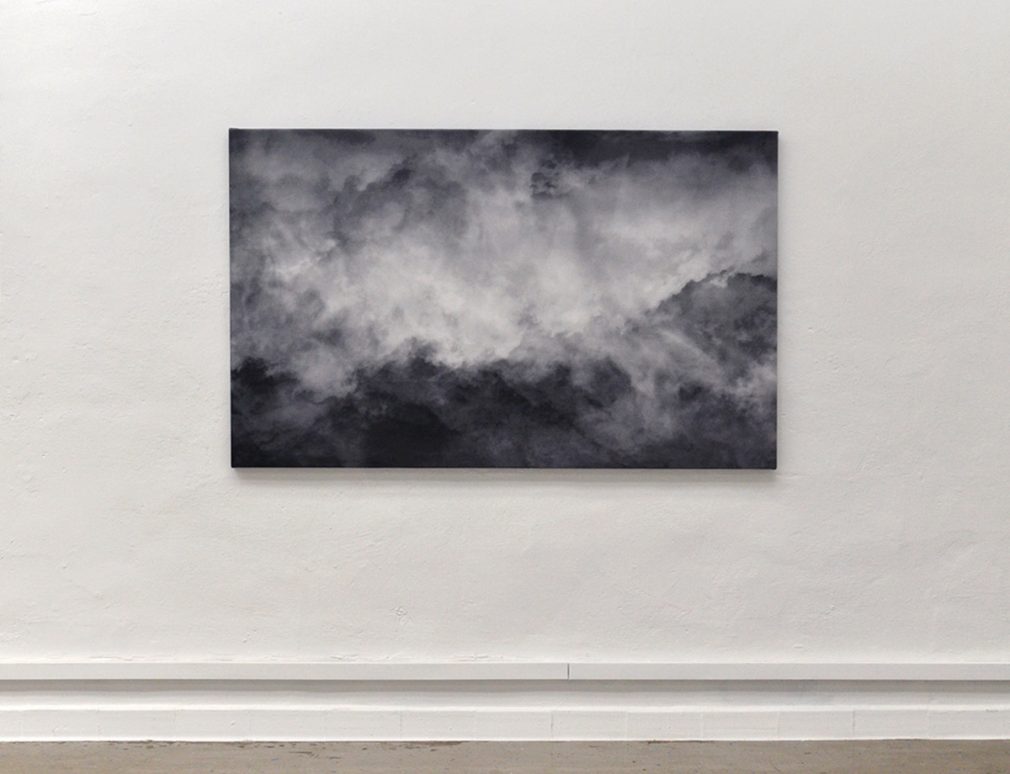
K, since 2017
The K series has emerged since 2017 in the style of photographs from the Hubble telescope and the image processing that they undergo before publication. Countless individual images from a kaleidoscope produce pulsating colour fields in meticulous image processing. Using shifts in the colour spectrum within established parameters, galaxies are produced that are transferred onto velvet using a special printing process.
